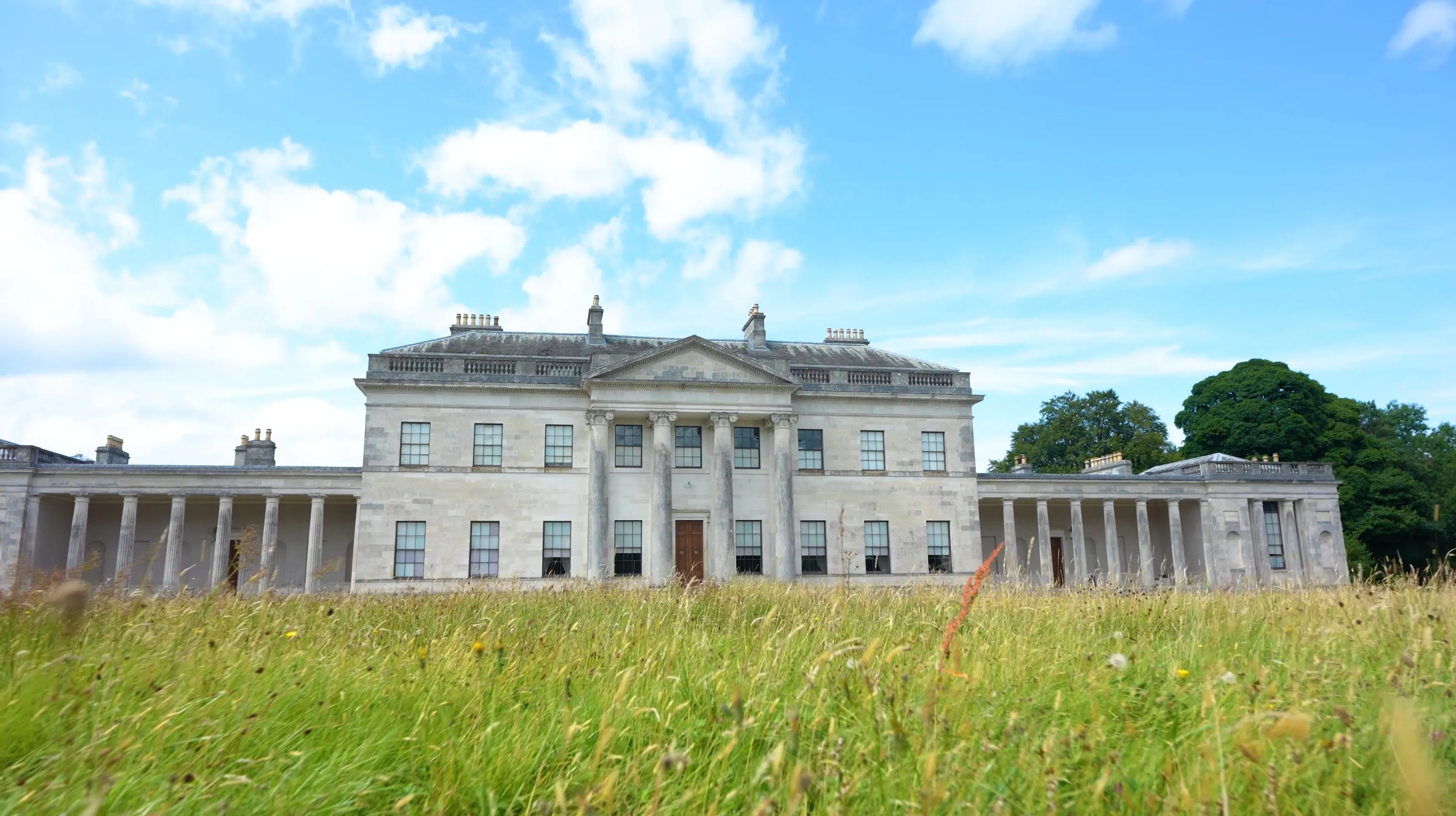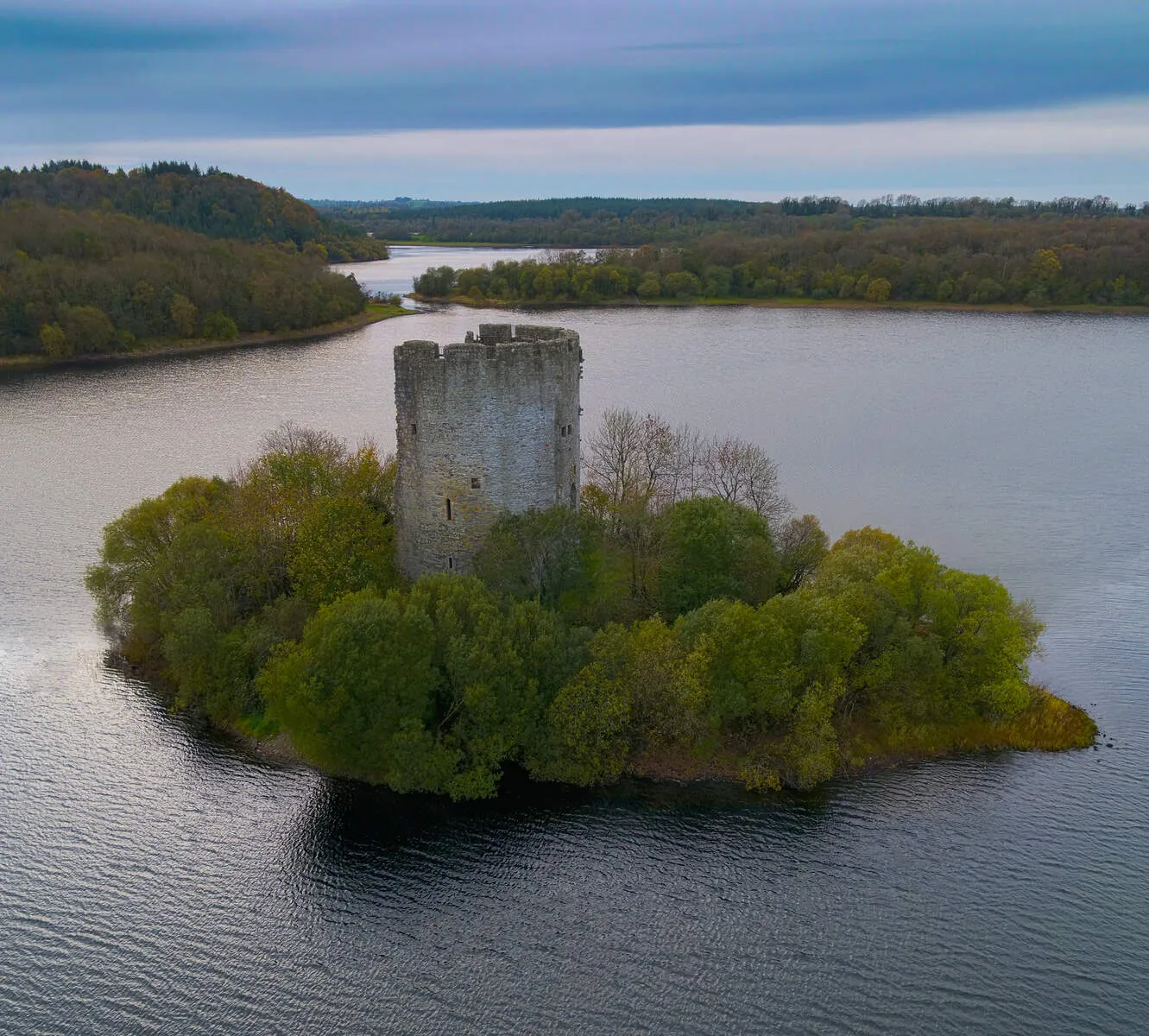Sitting alone on a small, man-made island in Lough Oughter, County Cavan, Clough Oughter Castle is an unforgettable sight from Ireland's medieval past. This round tower, built in the early 13th century on what was originally a crannog (an artificial island), became a key strategic point. It saw power struggles between local Gaelic chieftains and Anglo-Norman lords, and later played a role in the 17th-century Irish Rebellion. Its isolated position in the lake made it difficult to attack, until Cromwell's forces finally bombarded it with cannons in 1653, leaving the striking ruin you see today.
The castle's history is fascinating. Started by William Gorm de Lacy and finished by the local O'Reilly clan around 1233, it was a military and political base for centuries. During the 1641 rebellion, Philip O'Reilly used it as a prison, famously holding Bishop William Bedell captive here until his death in 1642. Owen Roe O'Neill, a key figure in the rebellion, also died here in 1649 under mysterious circumstances. The castle finally fell after the 1653 bombardment – you can still see the cannon damage on its south wall.
You can see the castle from the shore, or get a closer look by taking a boat tour. The tower is about 17 meters tall with walls nearly three meters thick. Look for defensive features like arrow slits (meurtières) and the high entrance, once reached by a drawbridge. Its circular shape is unusual for castles of that time. Being accessible only by boat adds to its mystery. The surrounding Lough Oughter is beautiful and a haven for wildlife like whooper swans and great crested grebes, with walking trails along the shore.
Spring and autumn are often the best times to visit, with milder weather and beautiful scenery. Recent conservation work has helped preserve the stonework. For anyone interested in places where history and nature meet, Clough Oughter Castle is a powerful reminder of Ireland's turbulent past and the resilience of its ancient structures.
Getting There
Clough Oughter Castle is accessible primarily by car and boat. Visitors traveling from Dublin should take the N3 to Cavan Town, then follow the R198 to Crossdooney and the R199 to Killeshandra. From Belfast, the A3 leads to Cavan Town, followed by the same route to Killeshandra.
Boat access is essential to reach the castle, which sits on an island in Lough Oughter. Guided boat tours depart from Kilmore, Killykeen Forest Park, or Killeshandra. Local operators such as Cavan Adventure Centre (arrangements must be pre-booked) and services listed via www.trinityisland.com or www.cavantourism.com provide access. The journey by boat typically takes about an hour and operates seasonally, from spring through autumn. Kayak and canoe rentals are also available through Cavan Adventure Centre for those seeking a self-guided experience.
No public buses or trains run directly to the castle. While Cavan Town serves as the nearest hub for regional transport, visitors are advised to arrange onward travel by car or taxi to Killeshandra before securing a boat transfer. The castle remains visible year-round from Rann Point, though physical access depends on seasonal boat schedules and weather conditions.
Parking
Parking in Belleek is free but limited, so arriving early is advisable, especially during peak seasons. From parking spots in Belleek, the castle can be reached via a short walk along the causeway that connects the village to the island where the castle stands.
While there are no designated accessibility parking spots noted at the castle or in Belleek, standard parking spaces are available in the village. During busy periods, if parking in Belleek fills up, consider exploring alternative options such as parking further along the roadside in the village or at nearby attractions like Croaghan Hill. Boat tours departing from Belleek also provide an alternative way to view the castle without the walk.
Please note that there are no fees or time restrictions for parking in Belleek, though spaces may be scarce during popular visiting times. The 15-20 minute walk along the causeway offers scenic views of Lough Oughter, making the journey part of the experience. While the path is straightforward, those with mobility challenges may wish to inquire about boat access for easier access to the castle's waterside vantage points.
Pricing
Admission to the castle itself is entirely free, allowing visitors to explore its dramatic ruins and lakeside setting at no cost. However, for an enhanced experience, a 3-hour guided kayak tour to the castle's island is available through Cavan Adventure Centre. This tour costs €39 per person (approximately $42.30 USD), providing a unique perspective on the castle's history and architecture.
Nearby Attractions

Cavan County Museum
Cavan County Museum stands as a vibrant repository of the history and culture of County Cavan, offering a journey through 6,000 years of human occupation. Housed in the former 19th-century Convent of ...
Distance: 23.7 km

Castle Coole Estate
Castle Coole is a stunning example of 18th-century neo-classical style, located in the rolling Fermanagh countryside in Northern Ireland. Built for the first Earl of Belmore and finished in 1798, arch...
Distance: 36.8 km
